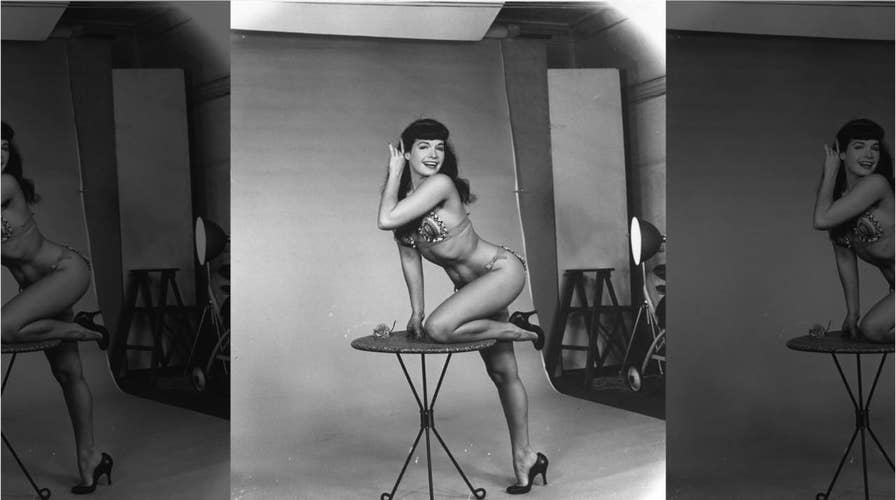Bettie Page biography reveals never seen letters and photos
Legendary pinup Bettie Page, who heated up the ‘50s with her racy good girl gone bad snaps and became a target of anti-pornography investigators, passed away on Dec. 11, 2008 — but now a new book is unveiling a new side to the Playboy Playmate
Legendary pinup Bettie Page, who heated up the ‘50s with her racy good girl gone bad snaps and became a target of anti-pornography investigators, passed away on Dec. 11, 2008 — but now a new book is unveiling a new side to the Playboy Playmate.
Tori Rodriguez is the co-author of the recently released "Bettie Page: The Lost Years,” which delves into the model's life after she retired in 1957, including an on-again, off-again struggle with mental illness. The book also features never-before-seen photos, as well as letters from 1949 to 2000, detailing Page’s life behind closed doors as she aged.
Rodriguez is a licensed psychotherapist, wellness coach and owner of Bettie Page Fitness.
Rodriguez, who also manages the late star’s official social media sites and blog, told Fox News she was introduced to Page’s nephew Ron Brem, a musician living in Bakersfield, Calif., through CMG Worldwide, which manages the cover girl's image. Brem soon revealed he possessed hundreds of photos and 29 letters between his late mother Goldie Jane Page, the icon’s beloved sister, and Page. The star herself never had children.
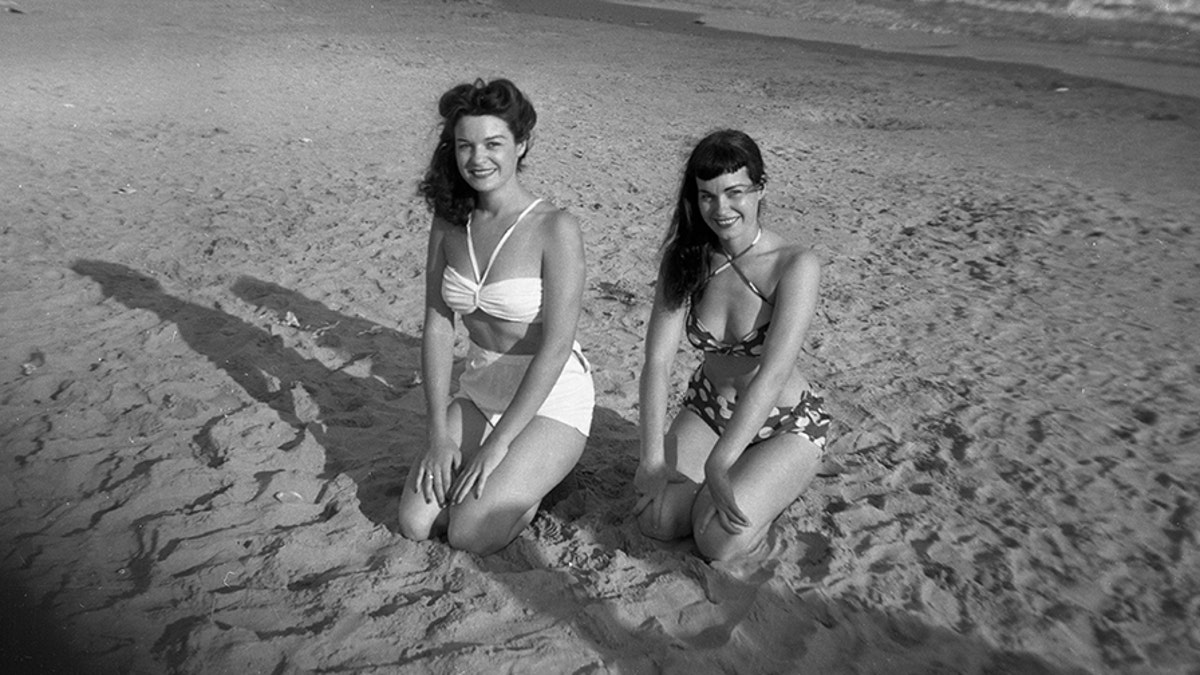
Goldie (left) and her sister Bettie in 1951. (From "Bettie Page: The Lost Years," courtesy of Ron Brem's archives.)
Goldie passed away in 2004 at age 78.
“Goldie went to great lengths to preserve these letters and photos," Rodriguez explained. “Goldie died before Bettie, so Ron had tons of belongings that she left behind. He just got around to going through some of that stuff a few years ago, and that’s when he turned up this treasure trove of letters and photos.”
Goldie, like her famous sister, was an aspiring model and actress. But unlike Page, Goldie was a burlesque performer before she settled into new roles of housewife and art teacher in 1956. It was actually at a nightclub during a strip teasing gig where Goldie met her soon-to-be husband. Goldie eventually hung up her pasties and focused on motherhood.
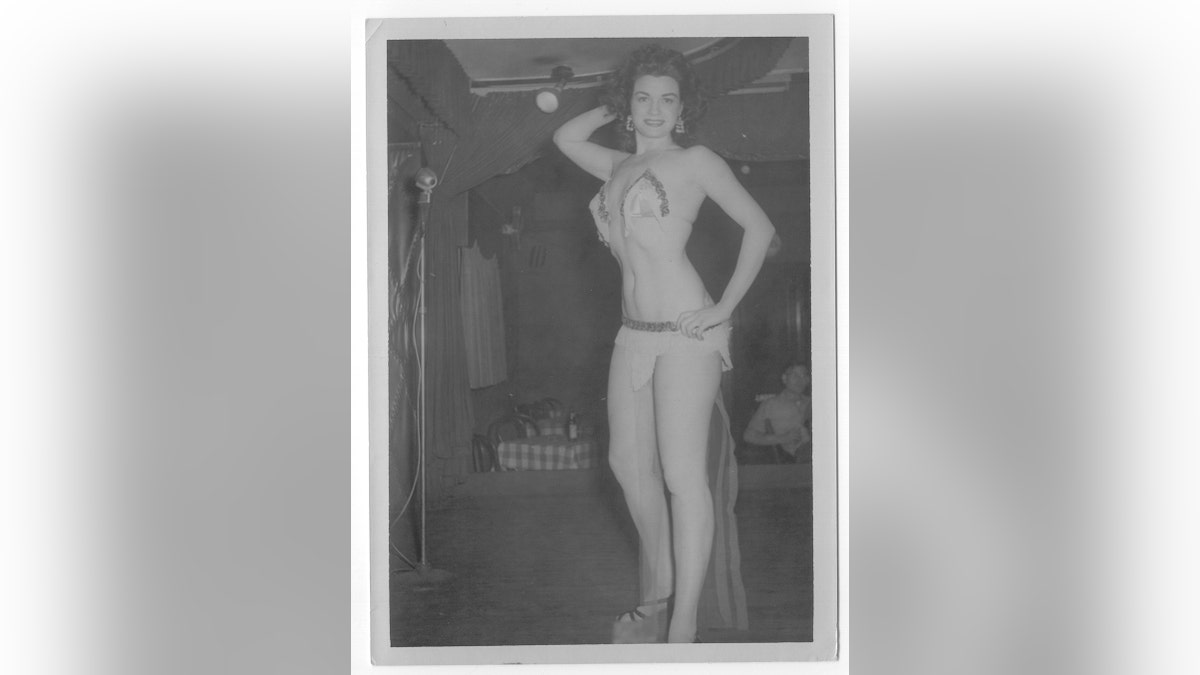
Goldie Page was a burlesque performer before she became a wife and mother. (From "Bettie Page: The Lost Years," courtesy of Ron Brem's archives.)
“They were incredibly close,” said Rodriguez. “It’s almost like they were twins. They looked alike, they were close in age, had pretty much the same interests and learned how to pose together. They both wanted to be models.

(From "Bettie Page: The Lost Years," courtesy of Ron Brem's archives.)
“Ron had talked about that there was a bit of a rivalry there in terms of modeling. He said Bettie would get a bit jealous when photographers would pay more attention to Goldie on shoots. And that Goldie was jealous of Bettie’s growing popularity in the modeling world. But overall, they were very supportive of each other.”
Page stuck with modeling — and it paid off. The New York Times reported that after posing in bondage for brother-sister photographers Irving and Paula Klaw, as well as in titillating swimwear for Bunny Yeager, her big break was when Playboy featured her wearing a Santa hat and not much else in January 1955. Page became the most famous pinup of the post-World War II era, a centerfold on a million locker doors and garage walls.
And then at the height of her fame, Page vanished for three decades. In her later years, Page famously never wanted to be photographed. And when she was the subject of a documentary that was released posthumously titled "Bettie Page Reveals All," only her Tennessee drawl is heard.
Rodriguez said that throughout Page’s life, she stayed in touch with Goldie. In Page’s letters to her sibling, she confessed to struggling with the idea of getting older.

Bettie Page (upper right) with her family in 1970. (From "Bettie Page: The Lost Years," courtesy of Ron Brem's archives.)
“She did have a problem with the weight that she gained as she aged, and just aging in general,” explained Rodriguez. “… If you look at what happened to Bettie in particular as she aged… She was having more frequent psychotic breaks, she developed terrible arthritis that got worse over the years, she was having lots of other health issues and health scares. And so, you understand why someone would think, ‘My God, if this is aging, to hell with it.'
“In her letters, she said things like, ‘I’ve been so depressed I ate everything in sight.’ Things like that. So she’s clearly stating that she was an emotional eater. Another thing I wonder about is antipsychotic drugs are very well-known to have weight gain as a side-effect. And so, I’m really curious about whether and how much it affected her weight. I don’t know if that was common knowledge back then. She might not have had the awareness, that it could be affecting her weight.”

Bettie Page in New York City, circa 1951. — From "Bettie Page: The Lost Years," courtesy of Ron Brem's archives.
Throughout Page’s disappearance, fans had previously speculated she was living in a mobile home, killed in a car accident, taken down by the mob or even joined a convent. In 1996, the Chicago Tribune reported the speculation had grown so intense that Penthouse magazine offered a $1,000 reward to anyone who could prove she was dead or alive.
In private, Page was suffering from a breakdown during a time when mental illness wasn’t as widely discussed or understood as it is today.

Bettie Page for Confidential Advertising. (Getty)
Time magazine reported that in January 1972, then-husband Harry Lear alleged she was running through a ministry retreat in Boca Raton waving a .22-caliber pistol and shouting about the "retributions of God.” Then in April of that year, Lear claimed Page, who was allegedly holding a knife, forced him and his two children to pray before a portrait of Jesus.
The magazine added Page was charged with breach of the peace and confined in Jackson Memorial for four months. Then in October 1972, she recommitted herself and spent another six months, part of it reportedly under suicide watch.
In 1972, Page attacked her landlord with a knife and was charged with two counts of assault with a deadly weapon. Time shared Page was found not guilty by reasons of insanity. In 1980, she was sentenced to five years’ confinement at Patton State Hospital. Then in 1982, she was accused of attacking another landlady. She stayed at Patton State Hospital until 1992. While in confinement, Page said she had hoped to express her remorse.
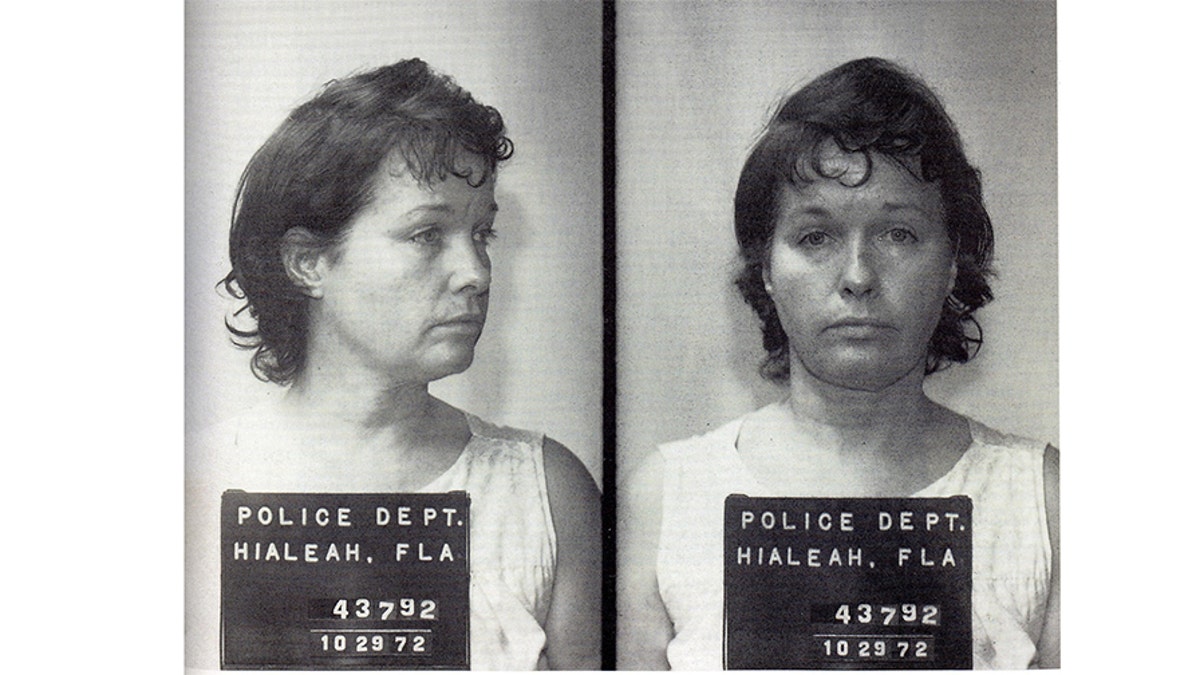
Bettie Page mugshot. — Splash
“In her time, there was a strong stigma around mental health, particularly with severe mental illness like schizophrenia,” said Rodriguez. "In her letters, Bettie never says, ‘I was diagnosed with schizophrenia.’ She never mentions that word. She talks about a nervous strain and emotional turmoil, those sorts of things. ... But it's clear she does have this paranoid schizophrenia that she was said to be diagnosed with.”
The New York Times reported that for years, Page lived on Social Security benefits. And despite her mental health anguish, Page, who converted to Christianity in 1958, relied on her faith and immersed herself in Bible studies. The newspaper added that in her later years, she lived on the proceeds of her revival, which had reached a cult-like status. Rodriguez said that despite her initial shame of being recognized as a sex symbol, she later came to terms with it.

Bettie Page's early modeling photo. (From "Bettie Page: The Lost Years," courtesy of Ron Brem's archives.)
“She herself said in an interview that she got rid of her pinup costumes that she had made by hand,” said Rodriguez. “… But then, she came to some peace with it.”
And it was her legions of fans that helped Page not only accept her fame but appreciate it.
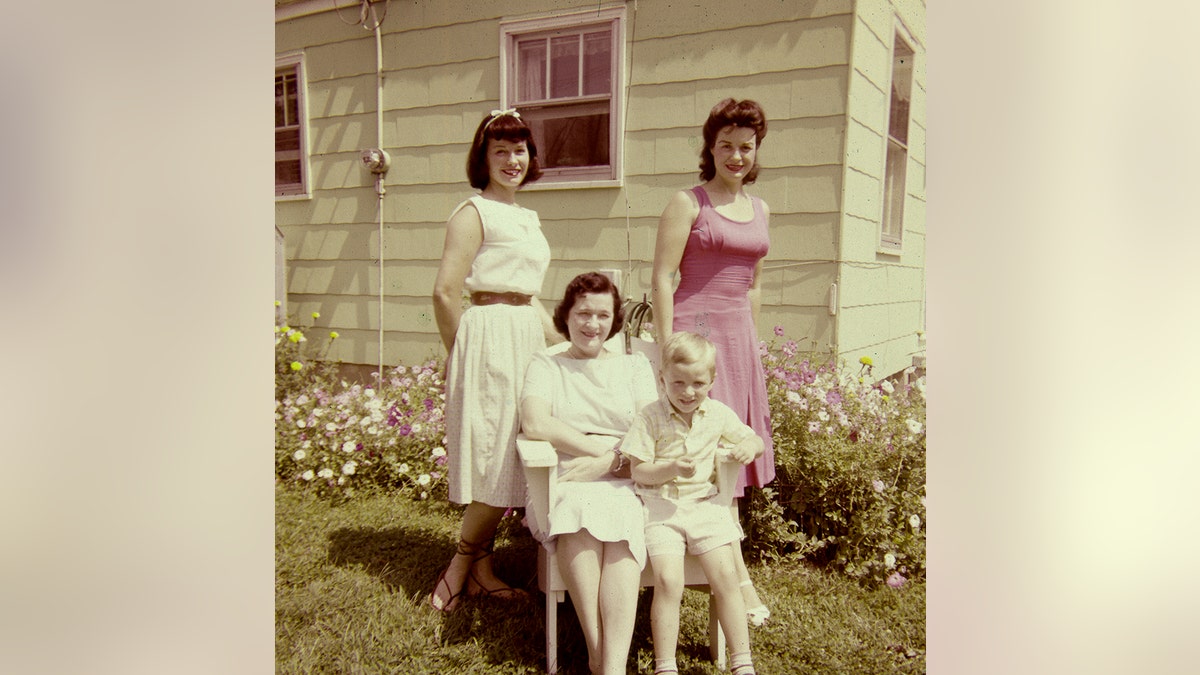
Bettie Page (left) in 1961. (From "Bettie Page: The Lost Years," courtesy of Ron Brem's archives.)
“In a letter to Goldie, she talks about having seen herself on TV and she talks about her biography that was about to come out and things like that,” said Rodriguez. “The thing she really emphasizes is how much she appreciates her fans. She really enjoyed the attention of fans in her later years.”
Rodriguez hopes her book will help readers realize that despite the many ups and downs Page endured, both privately and publicly, she was a woman with dreams of a brighter future.
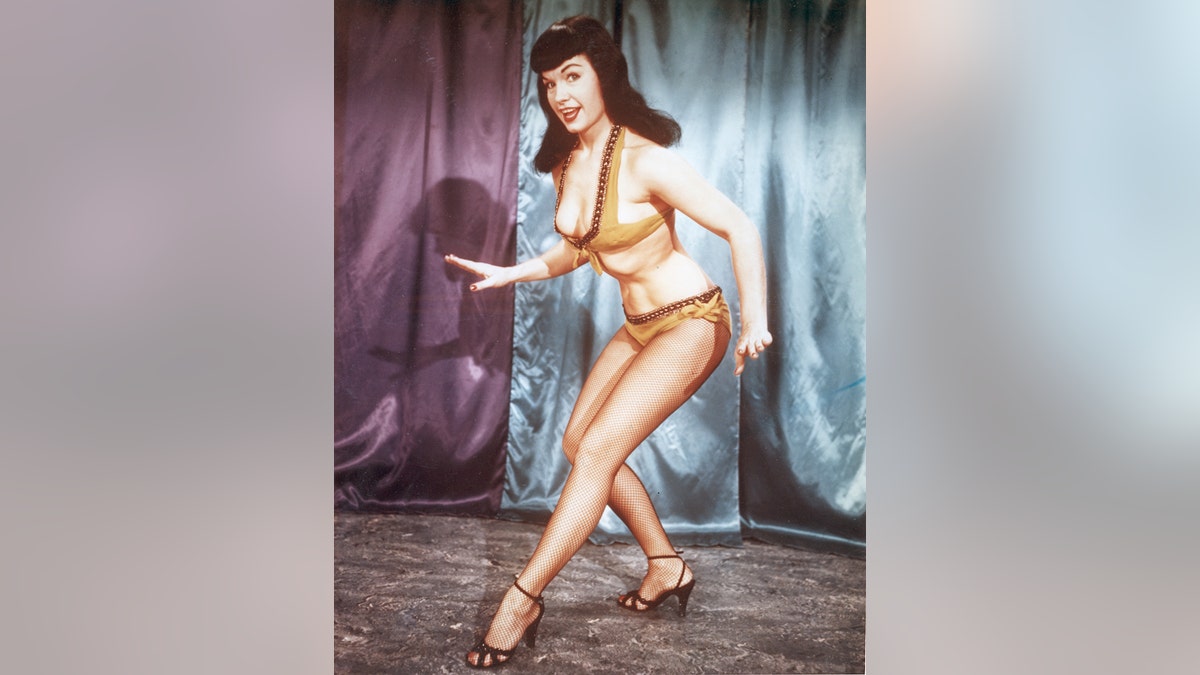
Bettie Page in 1955. (Getty)
“She struggled with a lot of the same issues other people are faced with,” said Rodriguez. “But she always maintained this stubborn optimism in the face of everything that life threw her way… Even through multiple hospitalizations and years of poverty and disappointment, she still got back up and hoped for more. She always kept planning a new path for herself.”
In late 2008 Page was hospitalized for three weeks with pneumonia before she suffered a heart attack and was transferred in a coma at Kindred Hospital in Los Angeles. She died there at age 85.
